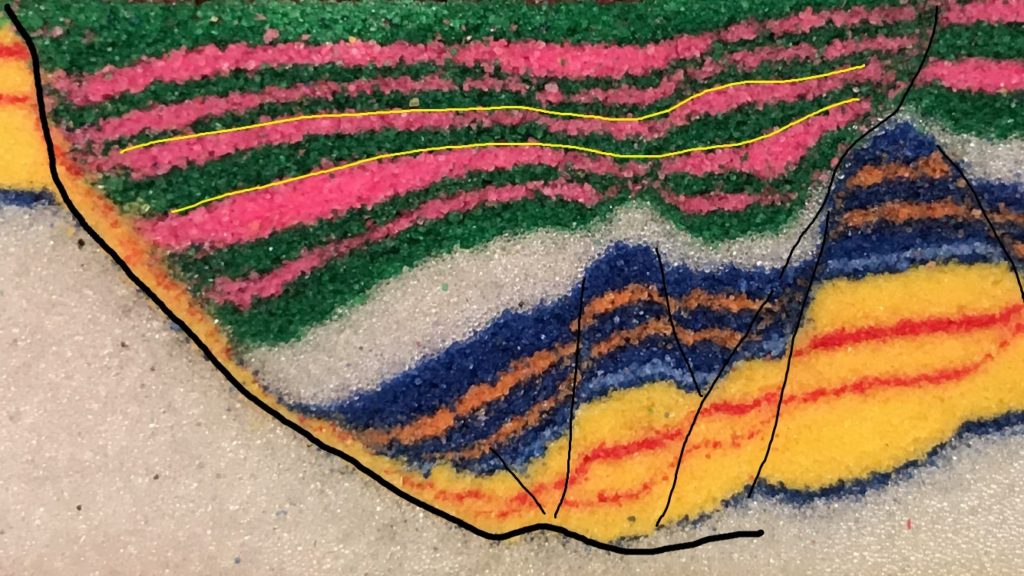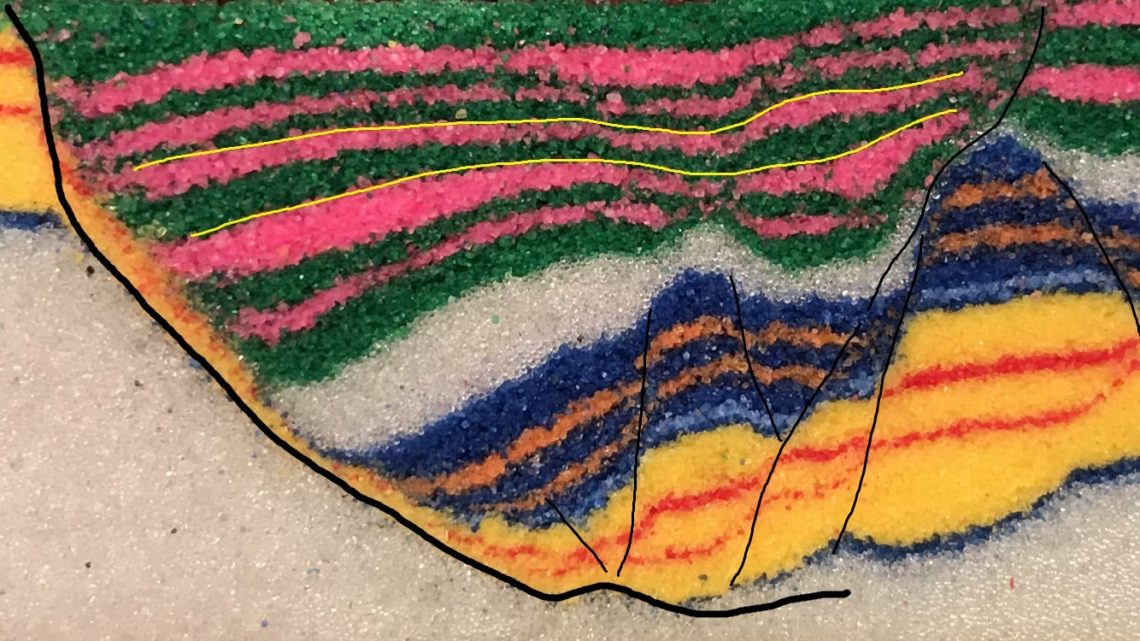
Extensional anticlines along normal faults
Anticlines (convex-up fold structures in rock layers) are often associated with compressional tectonic forces which cause layers to buckle and fold. Anticlines can also develop when extensional forces produce normal faults in a rock mass, provided the steepness (dip) of the normal faults changes with depth. Anticlines that form due to a downward decrease in fault steepness are generally called rollover anticlines, and are a form of fault-bend fold. This post shows a conceptual diagram of this process, some sandbox models containing extensional anticlines, and a real-world examples.
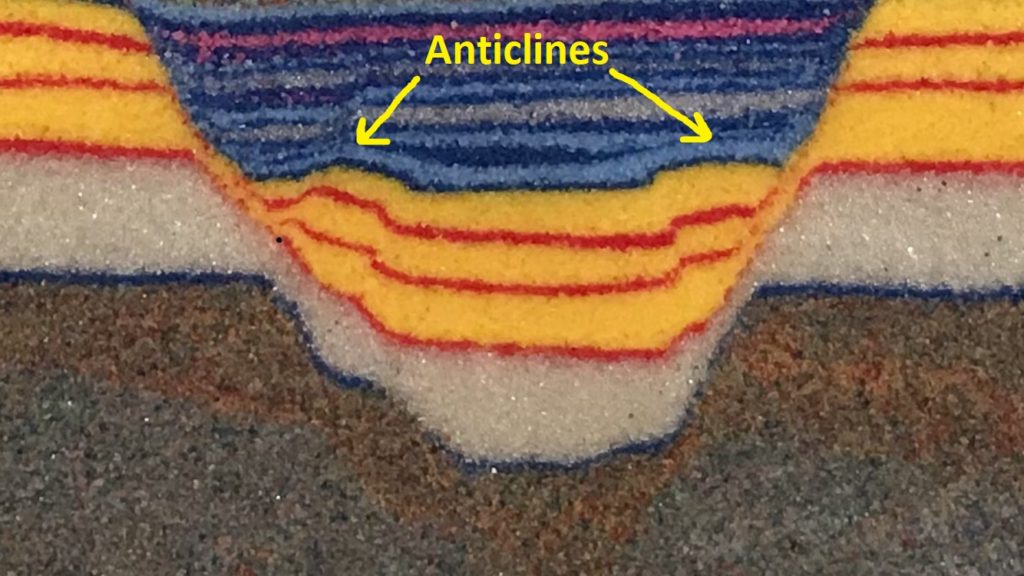
These minor anticlines form when the hanging wall block (the block of layers dropping downwards) must change its shape to match underlying footwall block along which it is sliding.
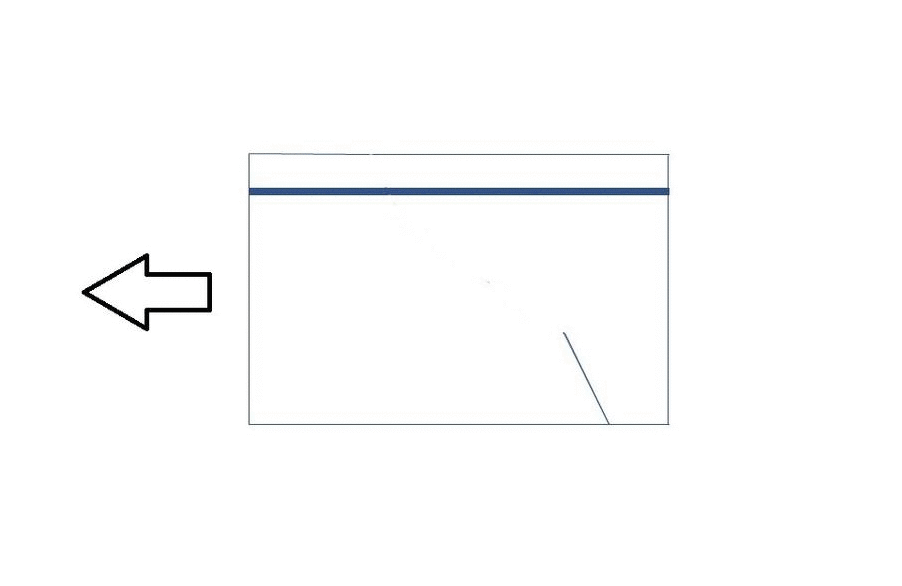
The “gaps” shown between the dropping hanging wall and the footwall in the sketches above don’t actually form in a model or the real world; I just use them to illustrate the shape mismatch. The upright anticline that forms results from an initial fault propagation fold that forms one antilcine limb, followed by collapse of the edge of the hanging wall to produce the other limb.
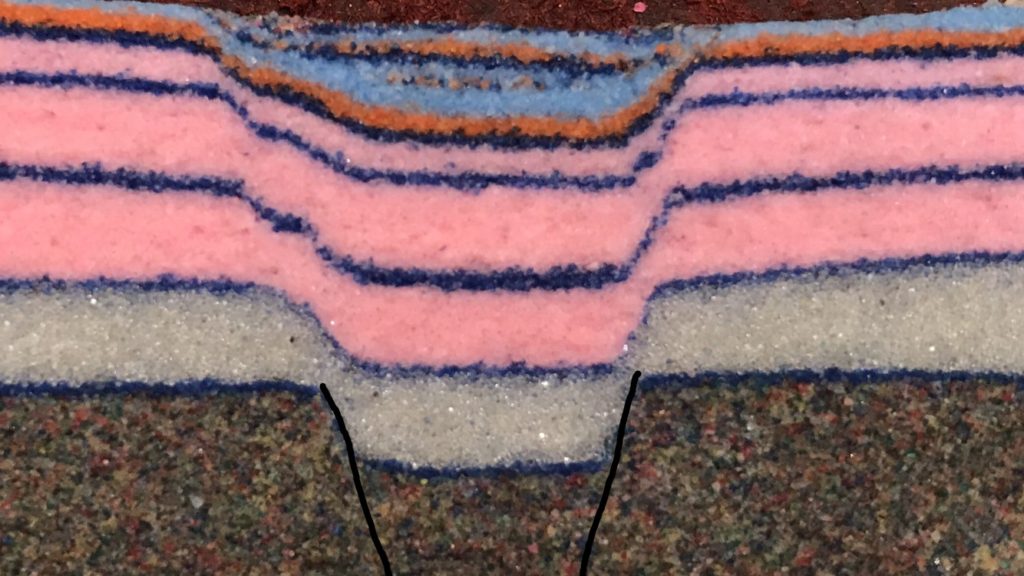
The image above shows the fault propagation fold stage, where the pink layer bend downwards above the broken gray basement layer at the bottom. If the model had been extended further…
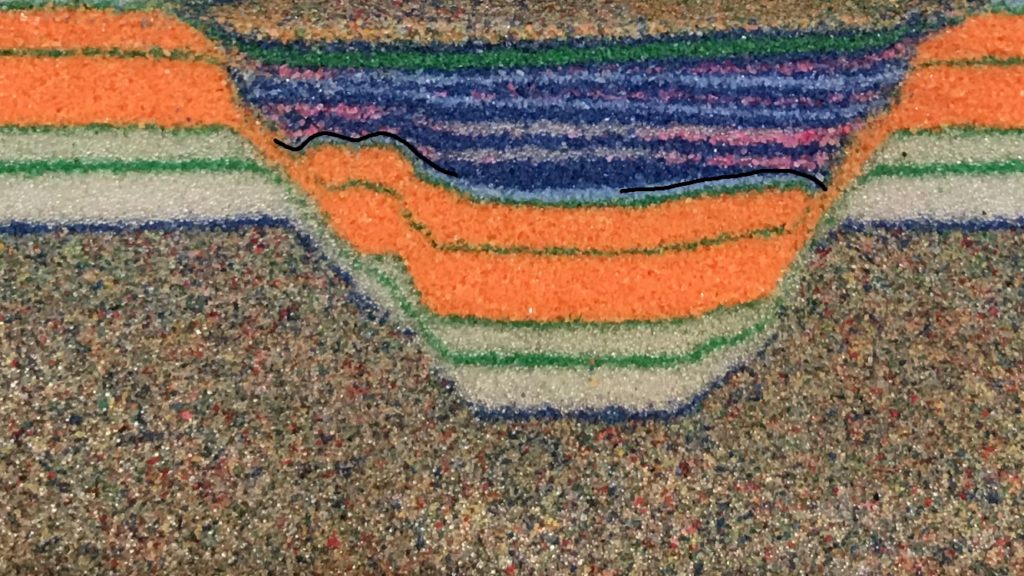
…it would look something like this. The left side of the hanging wall block (the downthrown block in the middle) has formed a closed, convex-up anticline in the orange layers. Compare it to the sketch below, the last phase of the moving image near the top.
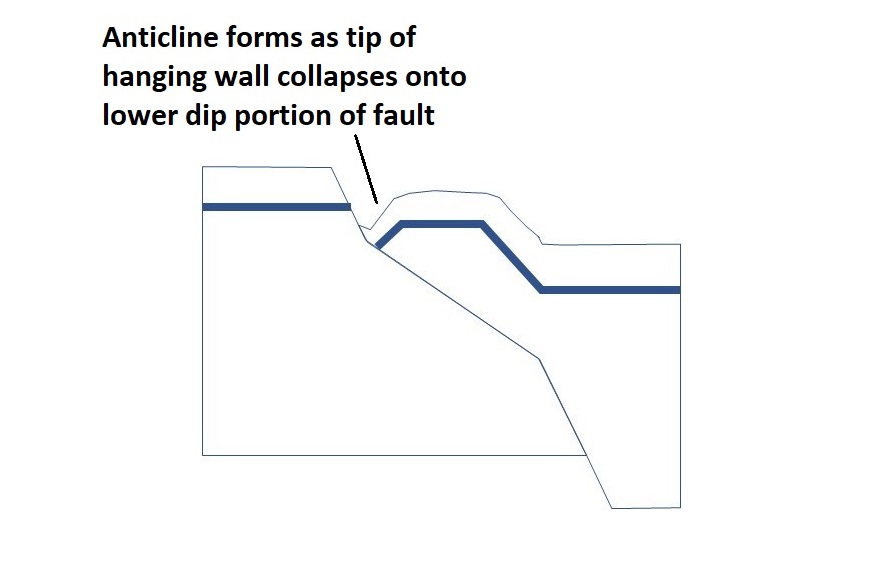
Below are a few more examples. In each case, the normal fault dips less steeply in the weak white layer, causing collapse of the overlying hanging wall and forming an anticline.
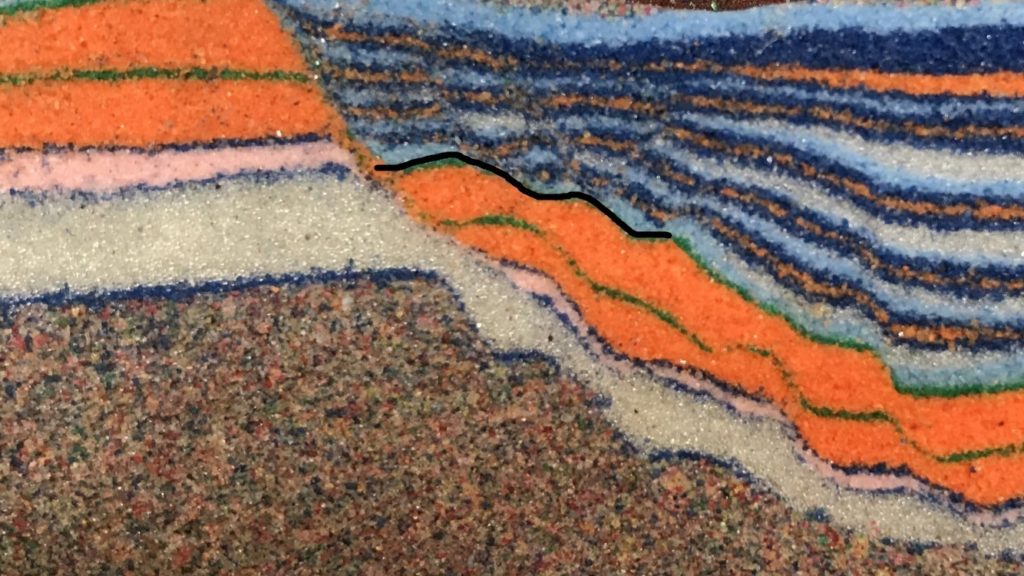
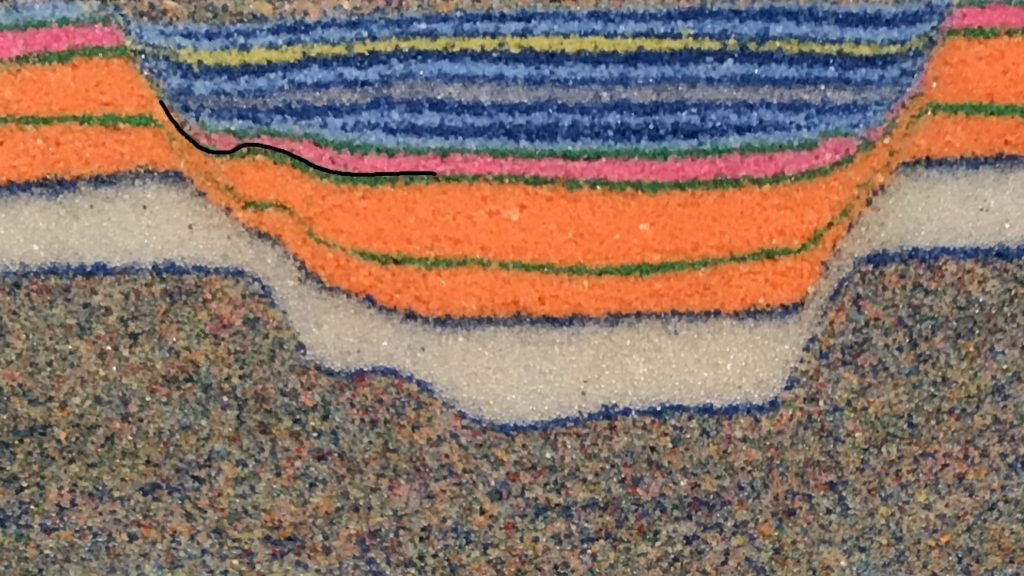
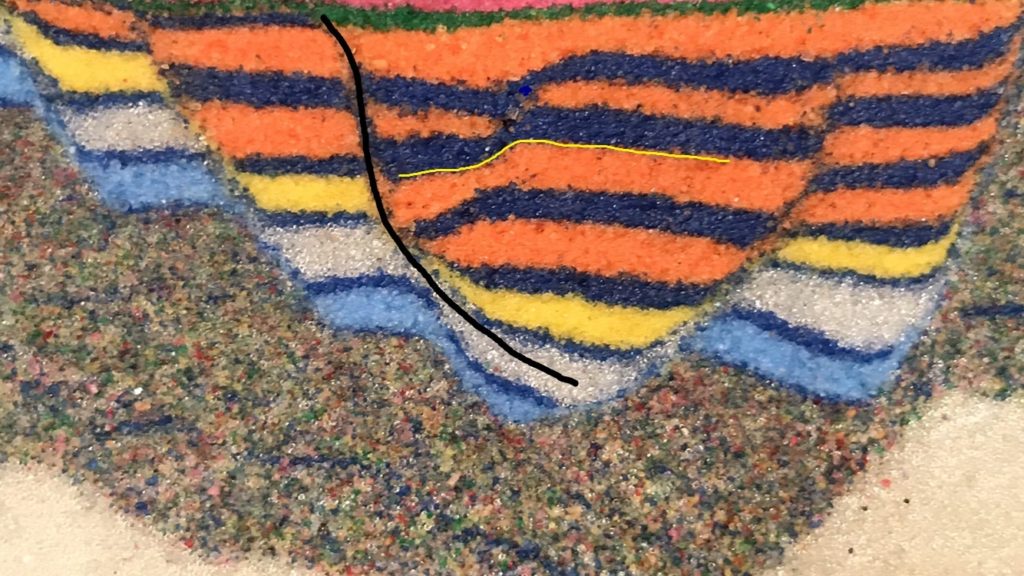
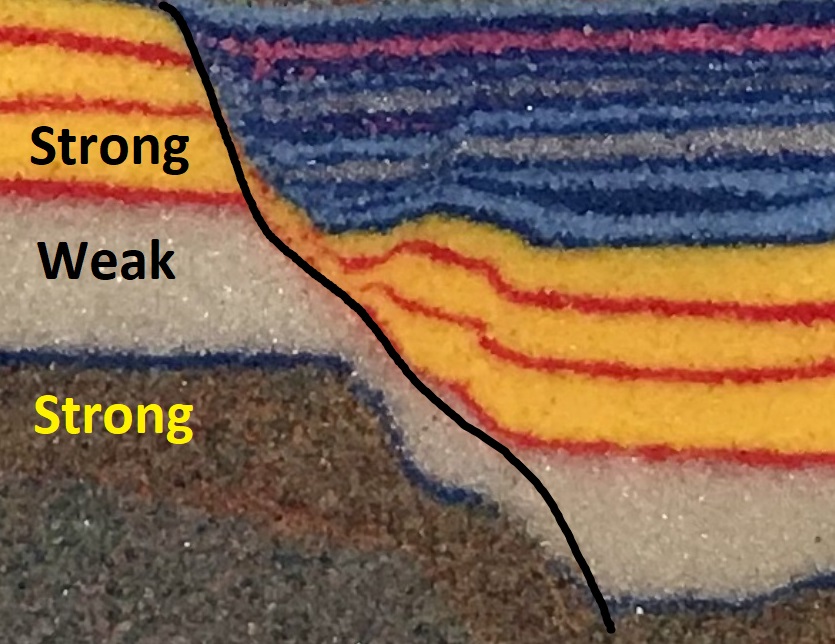
The collapsed left limb of the model anticline above resembles the collapsed limb of the hanging wall in the Jeanne d’Arc basin off of Newfoundland, shown below (image sourced here).

The next model image uses a slightly different setup, but the same downward flattening of the normal fault is still apparent. Here, another week layer within the hanging wall partially “disconnects” the pink and green layers from everything below, allowing them to form very gentle, broad folds above more intensely faulted layers.
